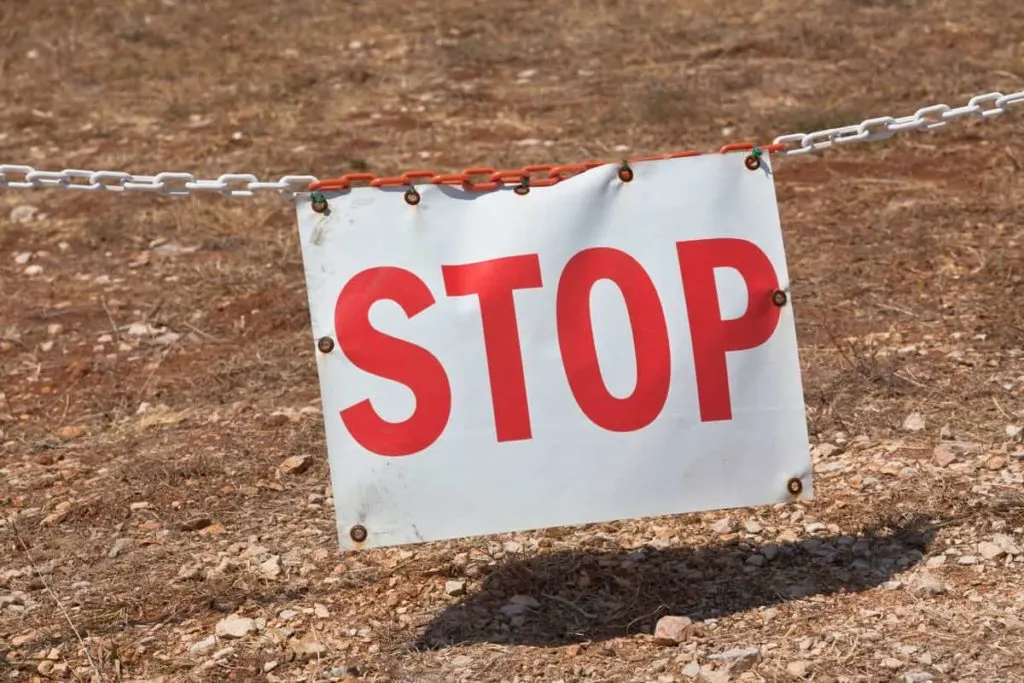
Germans Shepherds are widely recognized to be one of the most intelligent breeds of dog, and they are very intelligent indeed. However, even though they are one of the smartest breed of dogs, they also have a high degree of curiosity that can sometimes be detrimental to them.
From time to time, a curious GSD will ingest something that it just shouldn’t, and consequently it experiences a serious illness or worse. And GSDs have plenty to be curious about, as homes and yards are actually filled with scores of tempting items that can be harmful and potentially fatal if your dog eats them.
There are many items that you may have accidentally overlooked either by just not thinking of them, or perhaps thinking that they are harmless. This article will take a look at a number of items that most all of us have in our homes that are harmful to your dog if ingested.
Click Here to Jump to a Section
1. Medications
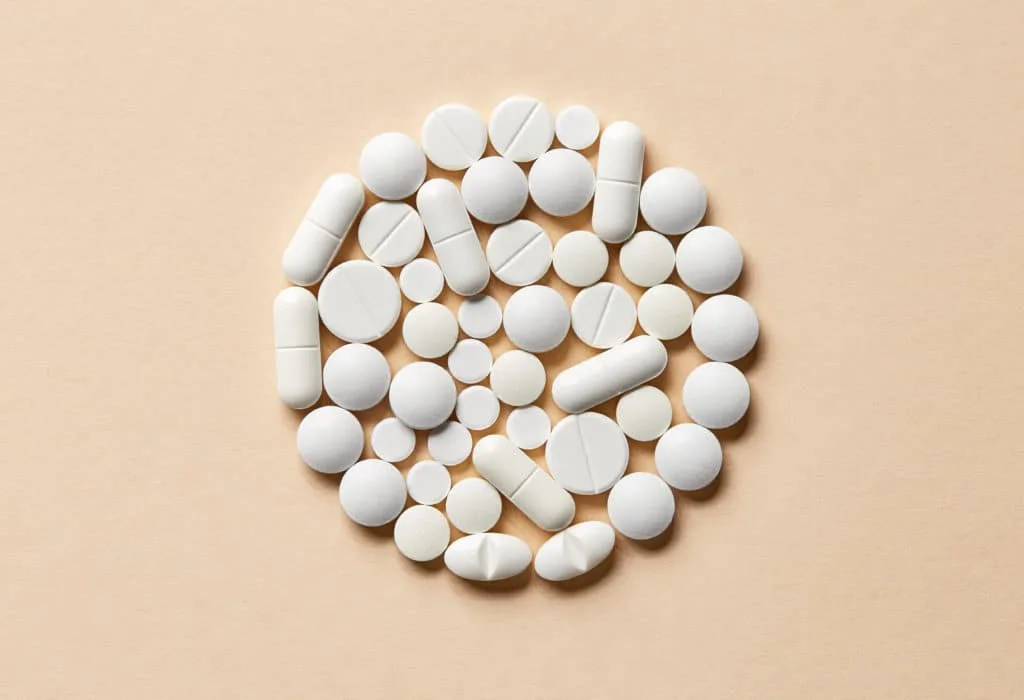
Sometimes when we have a headache, we will reflexively grab a Tylenol or something similar, take what we need and set the bottle down and walk away.
Drugs like Advil, Aleve and Motrin can be very harmful to your dog. They can cause all serious illness and even kidney failure.
And even though these medications are sometimes recommended by veterinarians for your dog, never just give one to your dog without first consulting your veterinarian, as your dog’s sensitivity is much different than yours.
Antidepressants
While many of us keep antidepressant medications hidden away, the fact is that many of us don’t. These are also on the list of the most reported poisonings in dogs by the Animal Poison Control Center.
Be careful of leaving any antidepressants in a purse that you may leave on a couch or table, or in a pair of pants that you may set on a chair. And remember that your GSD is tall enough to easily access most surfaces in your home.
One of the dangers with antidepressants, as with other pills, is that it’s unlikely that if your dog finds them that it will eat just one. It’s not uncommon for a dog to eat the entire bottle.
If this happens, don’t even call – just get your dog to the veterinarian immediately and bring the prescription bottle with you if it’s still intact. If not, make sure that you can accurately explain the dosage and amount consumed to them.
Symptoms if ingested:
- confusion
- depression
- hyperactivity
- loss of balance and difficulty walking
- diarrhea
- vomiting
- increased body temperature
- rapid breathing and heart rate
Amphetamines
Medications such as Adderall, Ritalin, and Vyvanse are in the amphetamine family of drugs and are also responsible for a high number of calls to the Animal Poison Control Center.
These are stimulants, and they can lead to amphetamine poisoning in your dog. The effects are what you would likely expect from an overdose of a stimulant.
Symptoms include:
- restlessness
- hyperactivity
- panting
- tremors
- seizures
- increased heart rate
- dilate pupils
- high blood pressure
2. Liquid potpourri
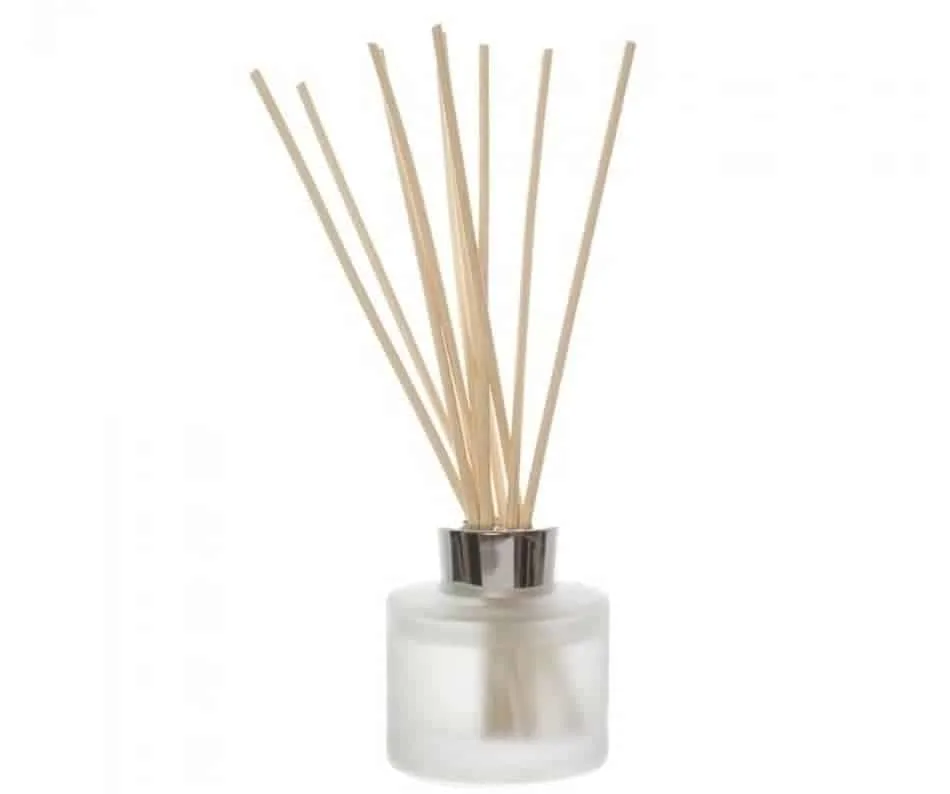
This is another item that many of us have in our homes and take for granted. And because many people do not associate liquid potpourri with poison, a large number of dogs ingest it each year.
Be aware that all liquid potpourri is toxic to your dog, and unfortunately many of them are not labeled as such.
But the fact is that they contain cationic detergents and essential oils, and the effects from these items when ingested can range from irritation to actual internal chemical burns.
It is also important to recognize that if your dog does ingest liquid potpourri that the signs of ingestion will not present themselves right away. It may take several hours before you notice any symptoms.
Symptoms include:
- lethargy
- weakness
- vomiting
- increased saliva
- drooling
3. Dryer sheets

Think twice the next time that you remove your laundry from the dryer and place it in a basket. Chances are if you use dryer sheets, that there is one mixed in amongst the clothes.
Depending on the product, dryer sheets may contain camphor, chloroform (yes, the one you are thinking of), or benzyl acetate. All of these chemicals are harmful to your dog. They can cause problems ranging from skin irritation to even kidney failure.
In addition to causing these problems, dryer sheets, if ingested, can even cause an intestinal blockage. And removing these blockages can be a serious enough issue to require surgery.
Symptoms if ingested:
- vomiting
- diarrhea and upset stomach
- seizures
- lethargy
- loss of appetite
- drooling
- abnormal behavior
4. Detergents
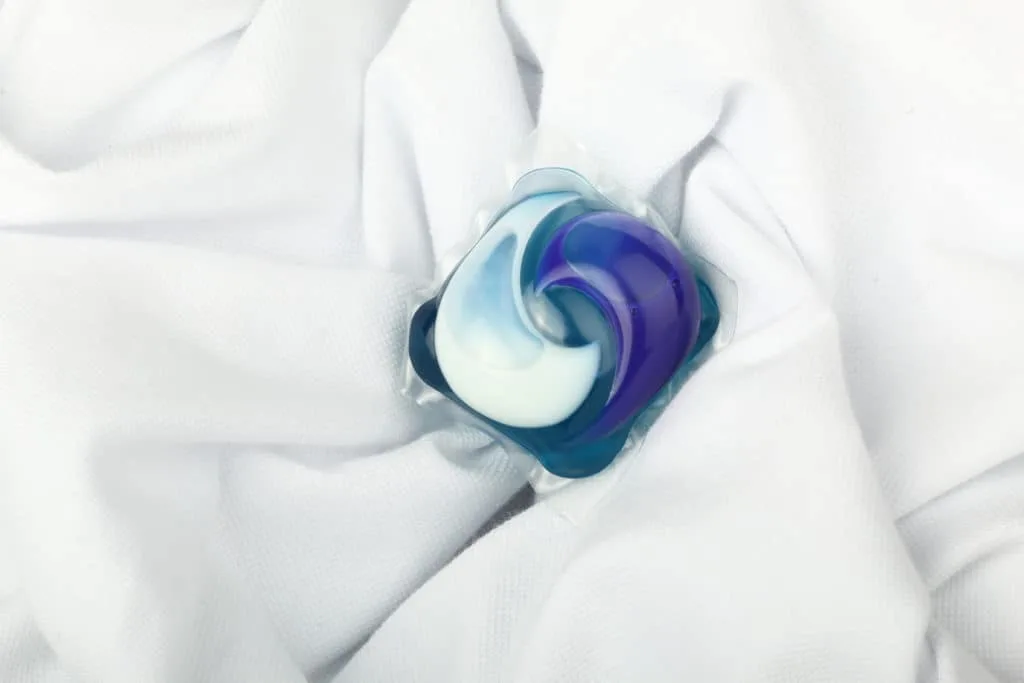
Detergents are often overlooked as a household item that is harmful to dogs. Even ingestion of a small amount can be enough to cause illness.
Be especially cautious of laundry pods which are more and more common these days. They present even more of a danger to dogs because the detergent contained in them is more concentrated than most bottled detergents, and they can easily be mistaken for little toys or an appetizing snack.
Symptoms include:
- vomiting
- diarrhea
- gastrointestinal lesions
- loss of appetite
- swollen stomach
- burns in the mouth
- excessive watering of the mouth
- difficulty breathing
5. Soaps
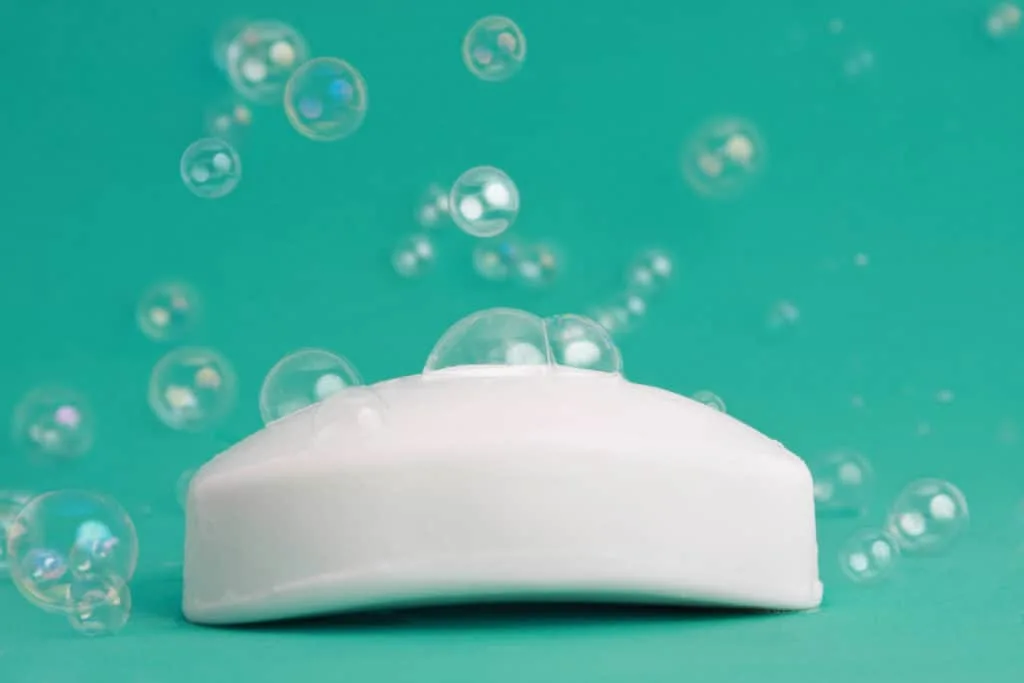
While your dog will not likely suffer any severe illness from eating some soap, the real danger of ingesting it for a dog is that the soap may get lodged and cause an intestinal blockage.
Because soap is slippery, it is more likely than not that if your dog chooses to eat some, that it will not finish chewing it before it slides down its esophagus. So it’s important to keep all soap out of reach of your GSD. This means keep it in the kitchen sink or set far back on the counter, and make sure that bathroom doors are closed at all times.
Symptoms include:
- persistent vomiting
- diarrhea
- bloating
- swelling of the mouth
- difficulty breathing
6. Irons
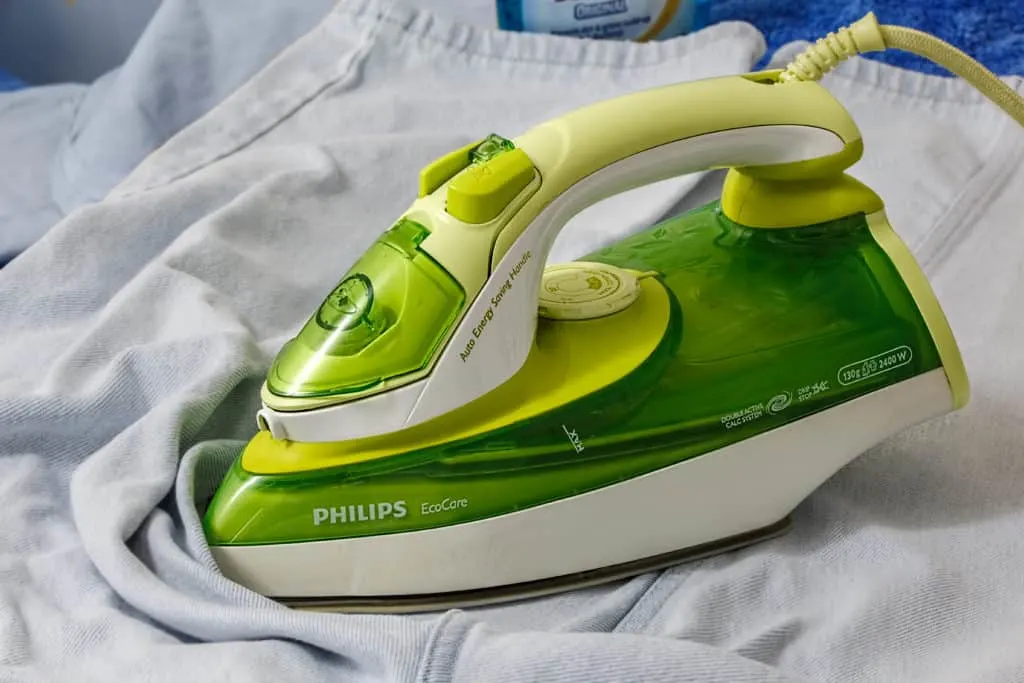
How many times have you ironed your clothes at the last minute and dashed out the door? Know that by doing this without properly securing your iron can present a real danger to your GSD.
A GSD is large enough that an electrical chord can easily snag on its foot when walking by and cause the hot iron to drop.
Not only can a hot iron cause a nasty burn to your dog, but just the sheer force of it falling is enough to break a bone or a paw, or even cause a concussion. Suffice it to say, even a cold iron can be dangerous if left plugged in.
So be sure to always make sure that if you are leaving your home after just ironing some clothes, that the iron is either unplugged and put away, or that the door to the room in which you keep it is securely closed.
7. Cars

While a car may not be traditionally be considered a household item, the fact remains that most of us have them at our homes. Be cautious to keep your dog away from your car after you have been driving it long enough for the engine and exhaust system to become hot. (a 5-minute drive will do it)
After driving, the exhaust system underneath your car is too hot to touch and hot enough to burn as well.
I learned this lesson the hard way, after returning home and parking my Jeep in the driveway as usual. About 10 minutes later I was playing ball with my GSD and the ball rolled under the Jeep. My dog crawled underneath it, and when he returned he had the ball – but he also had a full back of singed hair!
While thankfully there was no skin contact and my dog did not feel a thing, this incident was too close for comfort and has kept me on guard ever since.
8. Carpet shampoo
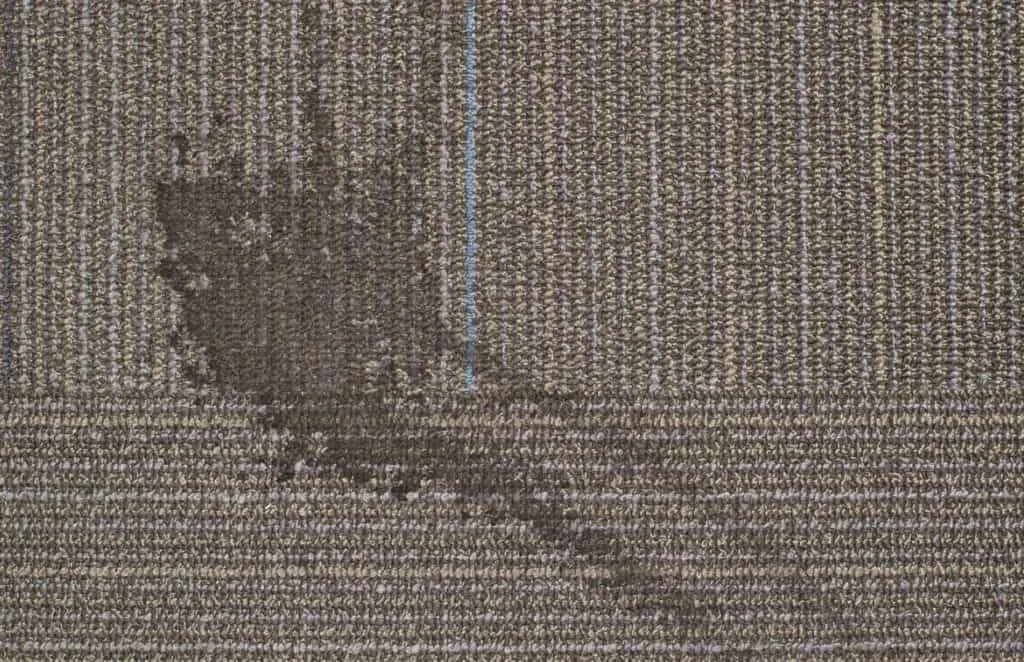
Accidents will happen. And when they do, you need to be sure that you’re dealing with them properly and in a manner safe to your dog. But beware, because all carpet cleaners are not made the same.
In a study performed by the environmental working group, a total of 37 products from 17 different brands were tested. They used a grading scale of A through F.
They based their ratings on:
- the potential for asthma or respiratory irritation
- the potential for triggering skin allergies and irritation
- how dangerous the products may be during pregnancy
- weather the ingredients may be cancerous
- how safe is the product for the environment
And the results were:
- A = 2 products
- B = 3 products
- C = 1 product
- D = 16 products
- F = 15 products
This means that the vast majority of carpet shampoos, and even some of those that advertise themselves as safe, are just not.
So be extra sure to check the labels, because these products are filled with misleading advertising ranging from pet stain formulas which give the appearance that they’re safe for pets, and others which claim that they are “green” or “earth-friendly.”
My personal preference is to avoid these cleaners altogether when possible. I opt for baking soda whenever I can because it’s non-toxic and has no odor – and it’s very cheap.
9. Mothballs
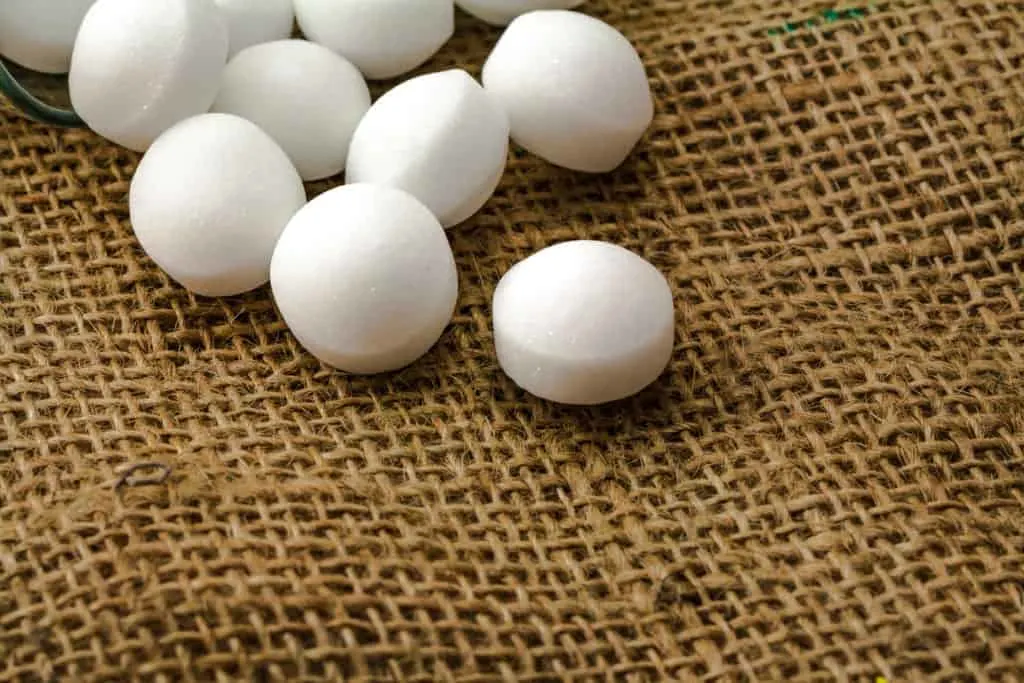
Mothballs are one of those items that we keep in all sorts of odd nooks and corners, and we often forget that we put them there. But don’t forget that mothballs are actually an insecticide delivery system.
And not only are they dangerous when ingested, but simply inhaling the fumes emitted from them can be harmful to your dog. Mothballs also present a danger if your dog’s skin comes into contact with them.
There are two different types of mothballs – naphthalene and paradichlorobenzene, and they present differently with different symptoms if ingested. Though both can cause seizures, naphthalene is twice as toxic as paradichlorobenzene.
Naphthalene: This type when ingested primarily attacks a dog’s gastrointestinal system and can cause:
- vomiting
- loss of appetite
- anemia
- pronounced weakness
- seizures
Paradichlorobenzene: This type when ingested attacks the nervous system and can cause:
- drooling
- loss of balance
- confusion/disorientation
- seizures
10. Tobacco products

While it is well known that tobacco poses a wide range of dangers to humans ranging from respiratory illness to cancer, its harmful effects on dogs are often overlooked.
Your dog is not equipped any better than you are to deal with the negative effects of tobacco and nicotine, and are in fact much more sensitive to both products. This applies to smoking and chewing tobacco alike.
The effects of second-hand smoke also contribute to nasal tumors and lung cancer in dogs. And if a dog eats a cigarette butt or tobacco spit residue, it can also develop gastrointestinal problems or nicotine toxicity.
Nicotine poisoning
Your dog can easily get nicotine poisoning by ingesting cigarette butts or chewing tobacco. And even more harmful is nicotine gum and nicotine patches, as the nicotine in these products is concentrated. Nicotine gum is especially dangerous for dogs because it often contains Xylitol as a sweetener, which is toxic to dogs.
It’s also important to be aware of e-cigarettes or vaporizers, as the liquid used in them can cause nicotine poisoning, and the batteries in the devices may internally burn your dog. The number of incidents recorded with this has risen with the proliferation of e-cigarettes.
11. Pennies
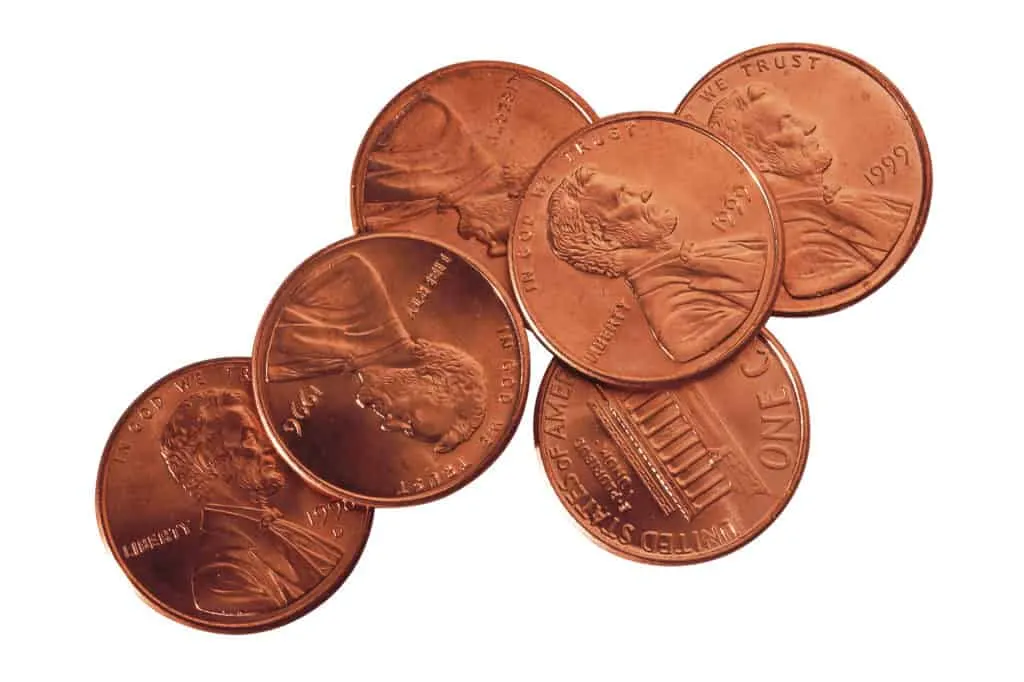
Pennies are not likely something that you think of your dog eating, but think again. Every year a number of dogs are admitted to animal ERs for doing just this.
When a dog ingests a penny, the primary concern is Zinc poisoning. This is because any penny minted after 1983 has a core made of Zinc which is covered by copper.
Because of a penny’s weight, it often settles in a dog’s stomach and doesn’t pass through or even come out the other end when vomiting is induced. And the stomach is an acidic environment that breaks down pennies rather quickly.
Once the copper cover of the penny is eaten through by stomach acid, the Zinc core begins to break down and is released into the dog’s bloodstream, which then leads to anemia and liver damage.
The signs of Zinc poisoning can take anywhere from several hours to several days to begin showing, and then surgery is most likely the next step. So if you suspect that your dog has ingested even a single penny, it’s crucial that you get it to the veterinarian immediately.
Symptoms include:
- vomiting
- blood in the urine
- decreased appetite
- depression
12. Polyurethane glue
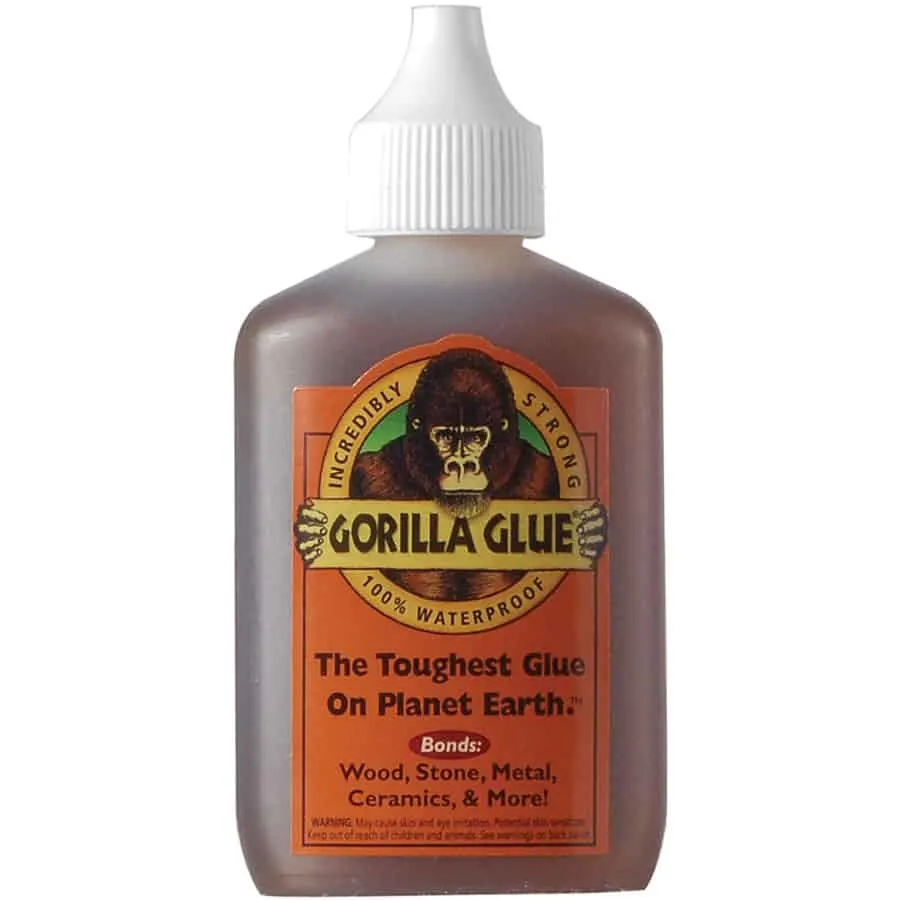
While there are a few lesser-known brands on the market, Gorilla Glue is the primary concern since it is now in many more households than any other brand.
Just take a look at this video to see exactly what happens when a dog ingests Gorilla Glue. It’s truly frightening!
When a dog ingests Gorilla glue, it combines with stomach fluids, causing its volume to expand. And when this occurs, depending on the amount ingested, it may even require emergency surgery to remove.
The occurrences of dogs ingesting this glue are more than you may think, likely because of how the glue smells – it’s sweet smell quickly grabs the attention of many curious dog.
13. Blood meal and blood meal
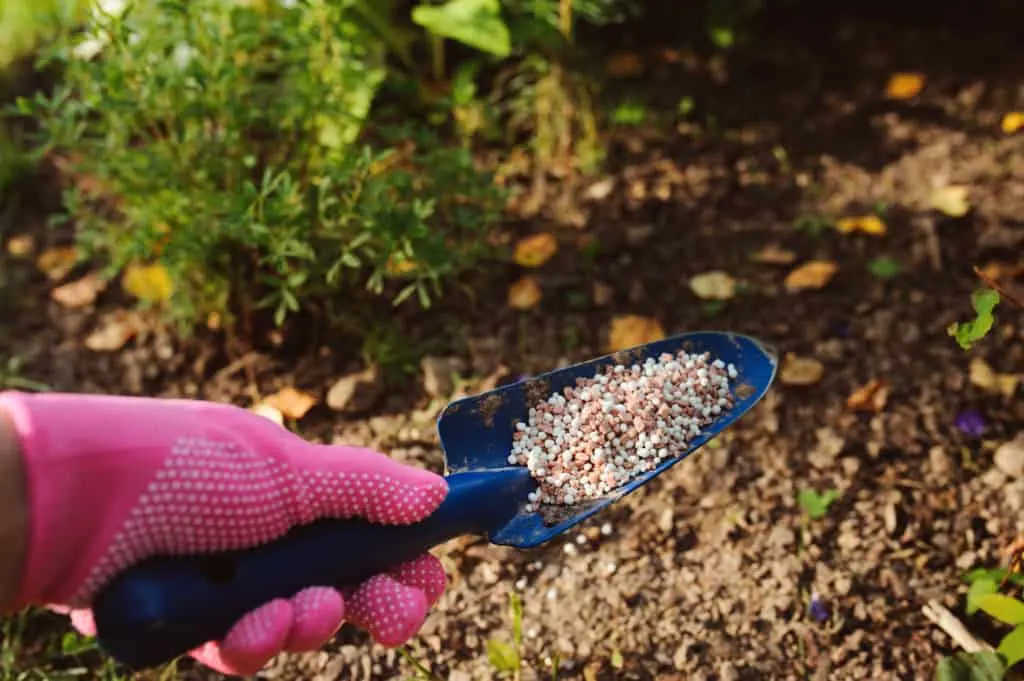
Depending on your level of gardening interest, you may or may not know what these are. Both are organic fertilizers used by many gardeners in the springtime to help their gardens recover from the winter freeze.
Both consist of freeze-dried blood and frozen grounds of animal bones respectively.
- Blood meal: If ingested, it will usually cause vomiting and diarrhea in a dog.
- Bone meal: More harmful than blood meal, as it can enlarge in the stomach and cause gastrointestinal obstruction. This will sometimes require surgery to remove.
14. Spray foam insulation
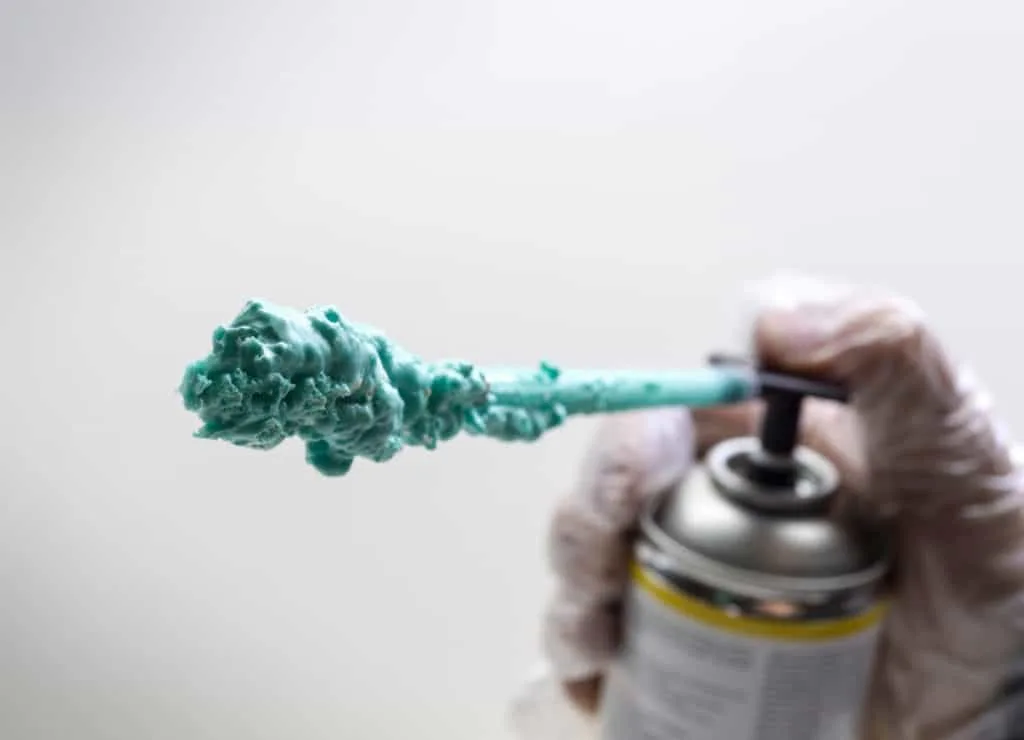
A lot of us enjoy working summer DIY projects in the backyard while the kids and dog(s) run around and do their thing. However, it is very important to be aware of the materials you use and the potential dangers that they may pose to your dog.
It’s common here in the Midwest to construct a shed in the backyard, and some people choose to use spray foam insulation in the process. It’s convenient and quick, but it also can be very harmful to your dog.
- Fumes: There are considerable fumes when applying foam insulation, so make sure that your dog stays clear of these. If inhaled, it can cause respiratory illness in your dog.
- Finished product: Once foam insulation is applied, the excess often needs to be cut away – this is where the real danger lies. These pieces can spread about a large area rather quickly, especially if there is a wind blowing. And your dog only needs to swallow a small piece to either choke on it or develop an intestinal blockage.
15. Pool chemicals (chlorine tablets and granules)
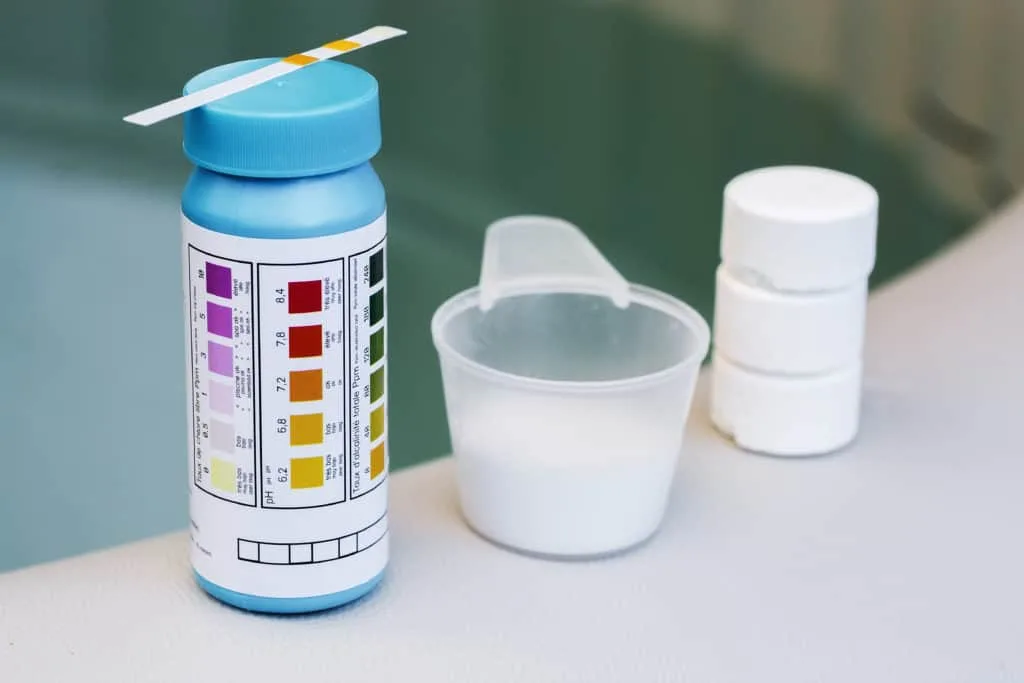
While a moderately chlorinated pool presents little danger in the form of chemical toxicity to your dog, the concentrated chlorine granules used to chlorinate some pools can pose a serious health risk to your dog.
If a dog ingests some chlorinated water from a pool, it may at most experience an upset stomach and some diarrhea. But if it ingests concentrated chlorine tablets or granules, the results will be more severe.
The Journal of the American Veterinary Association published a study of one such dog that ingested chlorine granules and the dog experienced:
- dehydration
- oral mucositis
- coughing
- wheezing
While the dog did eventually recover after extensive treatment that lasted 15 days, this case demonstrates the importance of storing your pool chemicals in a safe place.
16. Paint chips

We’ve all heard of the dangers of children eating lead paint chips, and the same dangers are applicable to your dog. When ingested, dogs can develop lead poisoning. This occurs because the ingested lead replaces a dog’s calcium and zinc, which are essential to its health.
The highest number of instances of lead poisoning occur during summer months when it is warmest, since paint more easily chips off in the heat. This holds especially true with older homes in which the paint is deteriorating.
A dog doesn’t necessarily need to chew on a painted surface to ingest lead paint, but instead, all that it takes are some flakes on the ground where the dog may be fetching a ball or eating a treat. The chips easily stick to a dog’s tongue. And they may also be present on old wooden fences that dogs sometimes like to chew on.
Lead poisoning affects a dog’s gastrointestinal and central nervous systems and must be treated immediately upon discovery.
Symptoms include:
- vomiting
- incoordination
- depression
- tiredness
- difficulty breathing
- shaking
17. Paper money
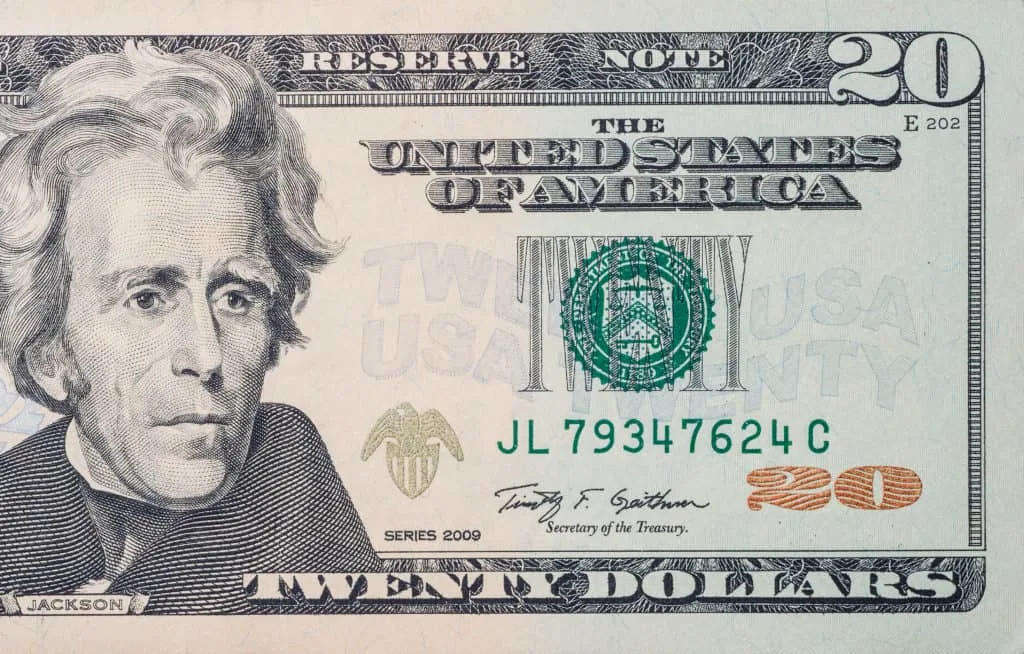
This is a unique one, and the dangers here are twofold. The first danger to your dog if it eats money is your reaction. It is common that when a person discovers that their dog has chewed up or consumed some of their money that the person becomes very upset.
I can attest from experience that German Shepherds loved to eat money. Until I corrected the behavior, there were many times that my German Shepherd actually specifically sought out dollar bills and would just either chew on them or swallow them completely.
A person’s first reaction upon this discovery is often a reflex of yelling at or scolding the dog in some other way. If you yell at your dog out of anger, as you can cause it lasting psychological damage which may lead to more behavioral problems down the road.
Your dog has no idea that it did anything wrong, and it is simply after the money because it is attracted to the variety of scents contained on the bill. And unfortunately, your dog cannot tell the difference between a one-dollar bill or a twenty-dollar bill.
Next, consider that money passes through countless hands during the time that it’s in circulation. “Paper” money is actually made of cotton and linen, and both of these materials capture and hold onto scent very well.
And the scents that get absorbed into paper money also include those of countless other humans and animals alike. Dogs are naturally attracted to these scents.
Along with holding different scents, cotton and vinyl also hold onto a number of different unsavory materials.
These include:
- Fecal matter: A 2002 report in the Southern Medical Journal showed found fecal matter was present on over 90% of dollar bills. This is mostly from people using the toilet and then not washing their hands.
- Bacteria: Dollar bills contain all sorts of microbes which are the cause of food poisoning and even pneumonia. Again, this is largely linked to improper hand washing.
- Drugs: You may have heard this, and it is actually true. Drugs are all over the money that you handle on a daily basis. In fact, traces of cocaine can be found on 80% of dollar bills in circulation.
If your dog ingests money, chances are that it will be fine, but there is a chance that if it contains a high concentration of one of the above materials that it can become ill.
The good news is that if your dog does fall ill from eating paper money, you may be able to retrieve your cash (in exactly the way that you’re thinking!) and have it replaced by the Federal Reserve – that should help to pay for those vet bills!
One of my dogs cost me quite a bit with this behavior until it was corrected. And it was an expensive learning experience. So be cautious to not leave your money laying around.
18. Plants

Plants are often overlooked when we are considering household items that may be harmful to our dogs. Perhaps it doesn’t occur to us that certain plants may create a real danger for our dogs because we are so used to seeing and having them around.
But the fact remains that there are many common house and garden plants that are truly dangerous for your dog to consume even a small portion of. And dogs are actually more attracted to the inviting smell and flavor of some plants than you may think.
Plants that are toxic to your dog include:
- Sago Palm
- Tomato Plant
- Ivy
- Amaryllis
- American Holly
- Aloe Vera
- Daffodil
- Milkweed
- Baby’s Breath
- Azalea
- Castor Bean
- Chrysanthemum
- Tulip
- Begonia
- Oleander
The plants listed above are ones that you and your dog are most likely to run into during day to day life. They are common in households and are often found growing outside in residential neighborhoods.
So be mindful of your dog as is sniffing around while out for a walk, and make sure that any of these that you may have in your home are kept out of reach of your dog.
19. Batteries
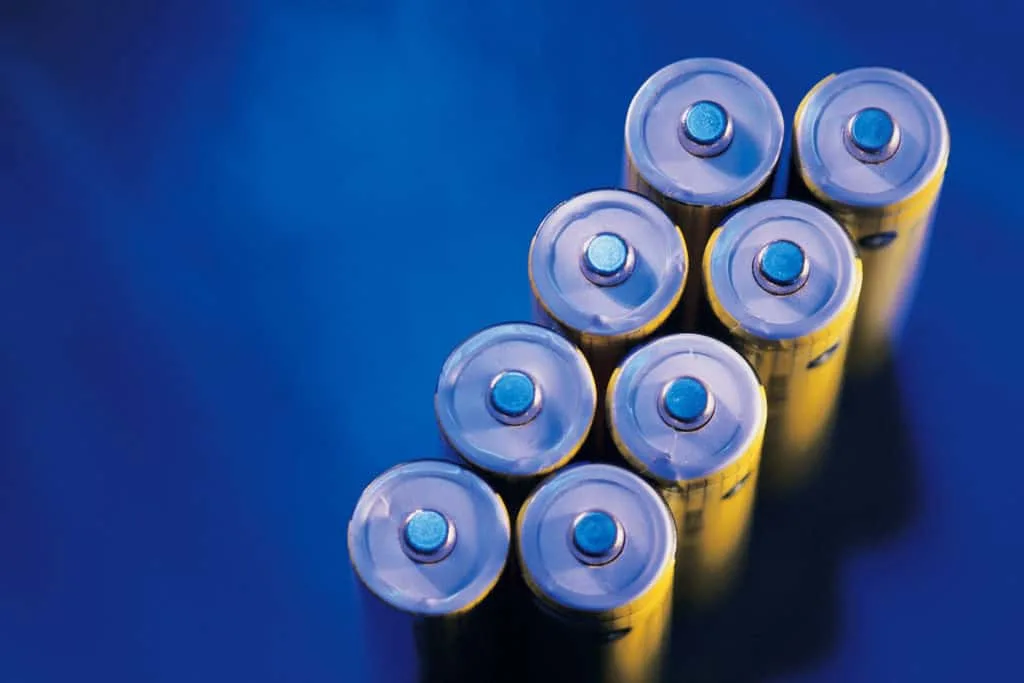
Most of us have that kitchen drawer just crammed with extraneous items. In it, you’ll find pencils, pens, tape, probably a few sharp pointy things, and a few other unexplainable items. And you will for sure find a number of batteries.
We put batteries in a number of our household items, and many items come with them preinstalled as well. And they are found in some items that may not be immediately obvious to us.
Places like:
- television controller
- cordless phone
- e-cigarettes
- cell phones
- hearing aids
- laptops
- computer mouse
- tablets
- watches
- garage door controllers
- flashlights
- kids toys
- alarm clocks
When the contents of a battery come into contact with your dog’s moist tissues, the consequences can be severe. The effects can range from ulcers to even perforation of the esophagus, mouth, small intestine, and stomach.
If your dog gets a hold of one of these or similar items, and you notice a battery is punctured or missing – do not hesitate, call your veterinarian immediately!
Symptoms include:
- loss of appetite
- mouth pain
- ulcers in mouth
- ulcers on tongue
- vomiting
- high fever
- black residue in mouth
20. Rodenticide
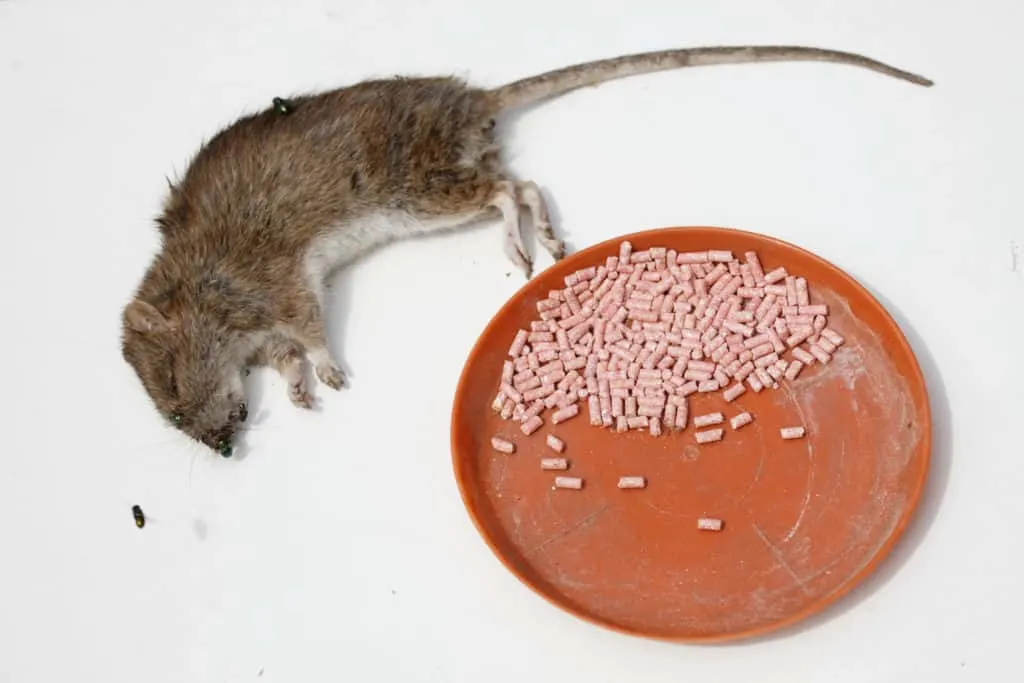
Many homes have the odd mouse or rat scurrying about during the night. We may have tried different mousetraps with little to no success, so we resort to poison.
This is not a good idea if you have a dog wandering about your home as well. The places where these traps are most effective, such as corners and underneath furniture, are exactly the same places that curious dogs like to explore.
If your dog ingests even a slight amount of mouse or rat poison, also known as bromethalin rodenticide toxicity, the effects can be severe.
Symptoms include:
- impaired movement
- paralysis of the hind limbs
- loss of appetite
- seizures
Should your dog ingest a high dose of rodenticide, the onset of these symptoms can be sudden and immediate. So if you even suspect that your dog has consumed any at all, contact your veterinarian immediately.
Also, consider glue traps instead of poisons altogether. While they may not be as effective and may get stuck to your dog, they can be safely removed and you won’t have any need to concern yourself with any of the severe consequences of your dog ingesting rodenticide.
Final thoughts
As you are able to see from this list, there is good reason to be mindful of the items that you use around your home. Consider using pet safe alternatives for as many of the items on this list as possible.
When you do purchase a safe alternative, make sure that you closely examine the label to make sure that the product is truly safe for your dog.
And as always, if you have even the slightest concern that your dog has ingested something toxic, do not hesitate and call or take your dog in to see your veterinarian immediately.
